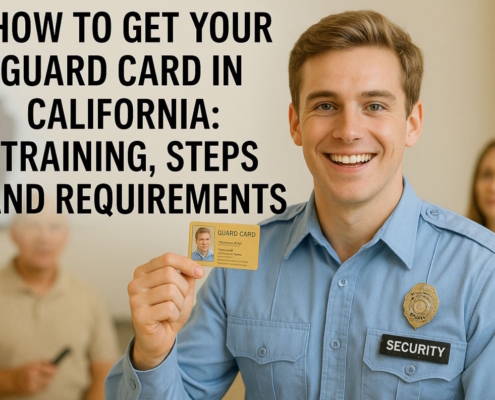Should all employers have an employee handbook?
Without a handbook in place, a business potentially faces heightened liability risks. An employee handbook can be a valuable communication resource for both the employer and the employee.
By: Douglas Wade, Attorney
Email | Call (800) 484-4610
An employee handbook provides guidance and information on a company’s mission, vision, values, policies and procedures, and workplace code of conduct. Together with Employment Forms documenting the tenure of each employee with your business, an employee handbook helps protect your business from employee lawsuits and claims, such as retaliation, discrimination, harassment, wrongful termination, and wage an hour claims.
How much does an employee handbook cost? At Nakase Wade, the cost for an employee handbook and employment forms is generally:
- $2,500 Employer less than 30 California Employees
- $5,000 Employers greater than 31 California Employees
In this article, our employee lawsuit defense attorney discusses employee handbook as follows:
What is the purpose of the employee handbook?
An employee handbook is a manual that provides an overview of the company’s specific policies, procedures, employee benefits, and other guidelines. In essence, an employee handbook establishes expectations for employees while also detailing employee rights and outlining an employer’s legal obligations. Having an employee handbook can protect a company from potential lawsuits by addressing issues such as discrimination, harassment, and termination policies. In general, a handbook is an essential resource for all new employees who are seeking to understand their new employer’s values and goals upon starting their new position.
Some employers, however, might fear that by making an employee handbook, they are simply creating a complicated manual of requirements that will cause problems down the road. This worry may cause reluctance when they would otherwise benefit from clearly laying out policies and expectations for employees.
Thankfully, almost without exception, employee handbooks are not considered legally binding. This means that they do not count as a contract between employer and employee. That said, as a precaution, an employer should include certain items in his or her employee handbook that stress it is not a legally binding contract. These items include the following:
- A blurb that clearly says that the company may add, change, or get rid of policies at its discretion
- A disclaimer that states the handbook is not a legally binding contract and that employment is at will, meaning that employees may be fired or may quit without cause and at any time
- A signature page that does not look like an agreement; rather, it looks more like a confirmation receipt
For employers without an employee handbook, the thought of creating one from nothing may seem stressful. However, it is essential to have one for the sake of consistency and transparency in a company. The following are eight major reasons an employer should write their employee handbook today.
- Acts as an introduction to the company
An employee handbook helps introduce new employees to a company’s mission, values, and culture. In fact, the opening section of the manual, or the introduction, may be the most important section of the booklet in that it helps new hires see how they will fit in with their coworkers and find their place and role at the company. This can help create a feeling of belonging, which studies have shown helps foster motivation in new employees, leading to more productivity. An introduction should also include a mission statement, where the business owner can communicate why they started the company, what sets it apart from other organizations, and what its goals are. It provides a bigger picture for the new hire, so that they can feel a sense of pride in where they now work.
- Let employees know what their expectations are
An employee handbook should let employees know what their responsibilities are. It should effectively serve as a guidebook for the company’s policies and rules so that employees may reference it. For instance, an employee interested in a vacation to Bora Bora may check the employee handbook to see how much time off he is allotted and how he may go about requesting vacation time for his trip. A handbook also tells employees whom they should contact about absences and where to go if they have questions about any of the policies described in the manual. Also included in the handbook is general information concerning timekeeping, safety, and reporting. The point is to provide straightforward, accessible information that can be easily referenced, like a glossary.
- Informs employees what they can expect from supervisors
A well-written employee handbook should support healthy manager-employee relationships by communicating leadership styles and objectives, in addition to describing the way the management operates. The manual should also go into certain aspects of logistics, including timekeeping requirements, pay periods, and work hours. Employees should also be made aware of the federal and state leave they are entitled to, such as Jury Service Leave and the Family Medical Leave Act (FMLA). By communicating these policies clearly, and not relying on word of mouth or precedent, an employer can avoid the potential for misinterpretation and inconsistency.
- Makes sure company policies are consistent and straightforward
A policy that is not practiced on a consistent basis is ineffective. A handbook should be clear about a company’s policies regarding conduct and behavior, employment, compensation, and any other specific procedures. Importantly, managers should be able to look at the manual as reference to ensure they are communicating policies correctly to subordinates. This way, their actions will be in line with company policy, so there is no risk of hypocrisy or resentment among employees.
- Highlights company’s benefits
If a company offers 401(k), health insurance, vacations, and paid parental leave, it should advertise these benefits in its employee handbook. The manual should detail the specifics of these policies, as well as any eligibility requirements. By offering excellent employee benefits, a business can better retain its best workers.
- Guarantees compliance with state and federal laws
An employer is subject to state and federal employment laws regardless of how many employees he or she has and what state they operate in. A handbook should let employees know about their various legal rights and the obligations of their employer. By including this legal information in the manual, a company is subtly letting its workers know that it is striving to be compliant with the law. For instance, if an employee is an expectant mother, her company will want her to understand her rights and obligations when planning to take parental leave. The company’s parental leave policy, included in the handbook, should define the eligibility and limits associated with the leave. There should be similar policies regarding federal FMLA leave, government mandates, and state disability leave.
- Defends against employee claims
The unfortunate reality is that an employer is likely to face a lawsuit or legal challenge from a former or current employee at some point. When this occurs, an employee handbook can be an invaluable document for an attorney or third-party investigator. If an employer presents a compliant and detailed employee handbook, it will become clear that the company showed reasonable care toward its workers. If the employee signed the acknowledgement page, it means that they read and agreed to the terms and conditions of employment listed in the manual.
- Offers information about employee resources
Employees should feel comfortable asking a member of management for help when they have experienced harassment or discrimination, or otherwise need to ask for assistance. If an employee does not have someone whom they can trust in a position of authority, then they may turn to the EEOC, DOL, or other third party. This could lead to an expensive and lengthy investigation. If a handbook indicates one or two people whom an employee can turn to, and also lists another individual to whom they may turn for a second opinion, the employee will be more likely to keep their complaints internal rather than turn to outside investigators.
What should be included in your employee handbook?
The following are some of the items that should be included in an employee handbook:
- Anti-harassment
- At-will employment
- Equal employment opportunity
- Benefits
- Anti-retaliation
- Code of conduct
- General employment information
- Pay policies, including meal and rest periods, overtime eligibility, pay days, and timekeeping
- Safety and security
- Family and medical leave
- Sick leave policy
- Paid vacation policy
- Assessment process for raises and promotions
- Disclaimers (it should be mentioned that the employer may change the handbook policies at any time at their discretion)
- Process for filing a complaint
Below are other items that may be included in an employee handbook. These pieces of information are not as essential, but are included in many companies’ manuals:
- Welcome letter from founder or CEO
- Ideal company culture
- Company’s mission statement
- Standard operating hours
- Annual office closures
- Promotion/raise policy
- Progressive discipline or behavior policy
- Dress code and attendance expectations
- A form to sign saying that the employee understands the handbook and agrees to the terms and conditions
If an employer would prefer further guidance about how to produce an employee handbook, they may use the following resources:
- United States Department of Labor
- Occupational Safety and Health Administration
After an employer has produced their employee handbook, he or she should make it viewable in an easily accessible format. Companies will typically save their employee handbook as a PDF or put it on the company’s intranet site. It should be noted that a digital copy is easier to change than a paper copy. In the event of a lawsuit or legal action, it is a good idea to save previous versions of the handbook and maintain dates of any edits.
How do you write a simple employee handbook?
When crafting an employee handbook, an employer should begin with an introduction that offers new employees a short description of the company, as well as a glossary of the manual. This opening statement should be a reflection of the company’s purpose, culture, and values.
After this section, the handbook should discuss specific policies, all of which should be organized according to subject, or by non-contractual and contractual status. For example, an employer may group its leave policies together, and harassment policies separately. Whatever way an employer wants to construct their employee handbook, he or she should be sure to mention which policy is contractual and which is non-contractual.
After going over the employee handbook, new employees should acknowledge their receipt of the handbook and demonstrate that they have read and consented to its contents. This is an especially important step if the manual has contractual policies. Agreement may be demonstrated by checking a box, signing a physical copy of the handbook, or sending a confirmation email.
A business owner should think about what form he or she wants the manual to be in. It could exist as an electronic PDF copy, a paper copy, or a copy that is accessible via the company’s intranet.
When should an employee handbook be updated, Why?
The best time to update an employee handbook is when changes to legal requirements affect your business. Outdated information about employment law may prevent employees from understanding their rights, and can even leave owners exposed to lawsuits. Updating your employee handbook is important for ensuring compliance with ever-evolving federal and state law. A good rule of thumb is to review and update your employee handbook every one to two years.
It is a good idea for an employer to routinely review their employee handbook. If a company has experienced any recent changes, then these should be reflected in the manual. It is suggested that an employer update their handbook once every year at the very minimum. If an employer refers to any statutory rates in their policies, like pay for sick days, then these should be made current in October and April.
When the handbook is updated, employees and staff should be given access to the most updated version for their reference. When an employer makes changes to contractual policies, he or she will need to have their employees agree to the amendments. This is an important step because an employer does not want to risk claims of unfair dismissal or breach of contract. Non-contractual policies, however, may be amended without consulting employees or staff.
Have a quick question? We answered nearly 2000 FAQs.
See all blogs: Business | Corporate | Employment
Most recent blogs:
































